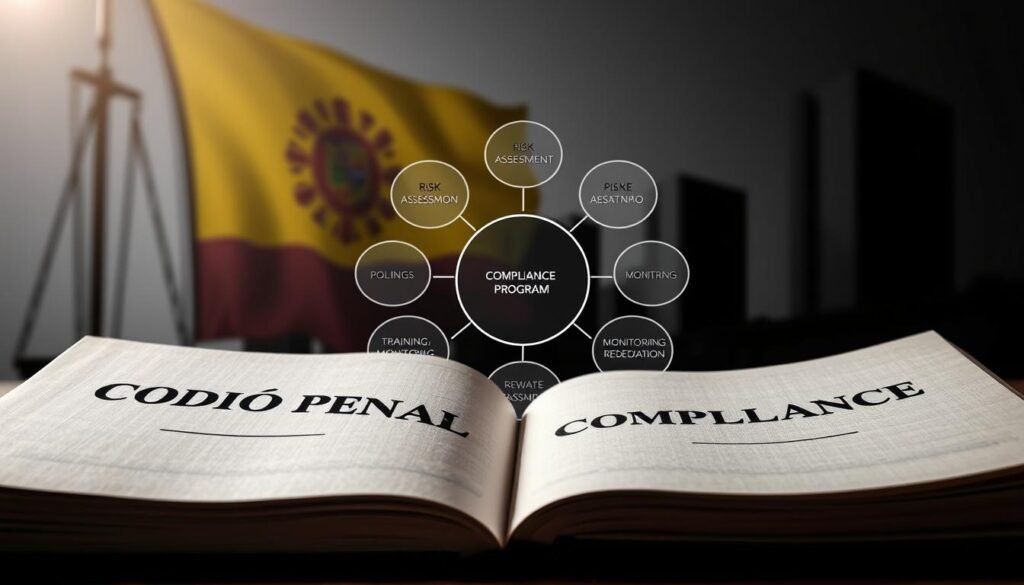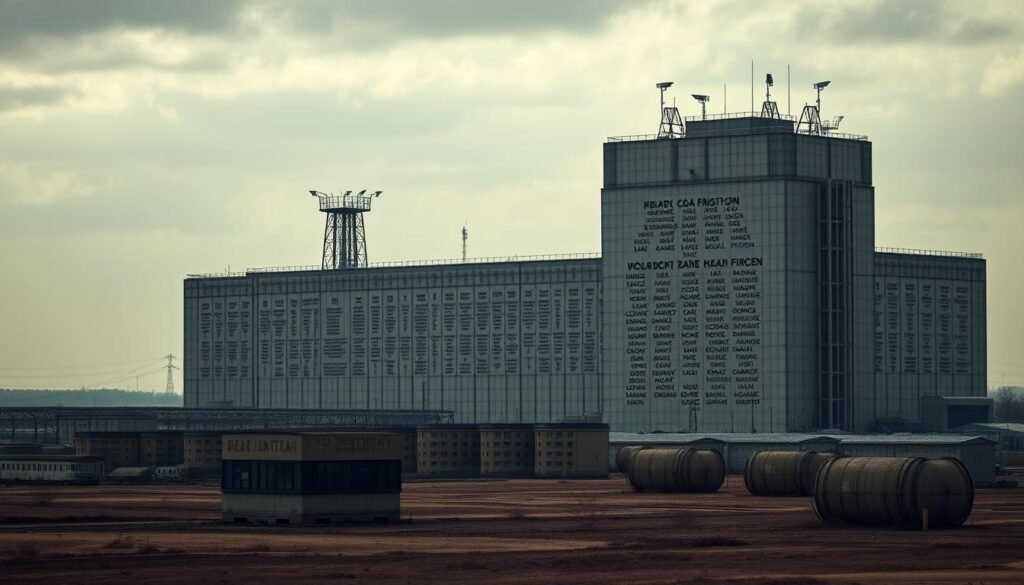One in five public contracting bids can be at risk when a corporate sanction arises in Colombia — a reality I have seen shape winning bids and halted projects.
I advise entities on state contracting and sanctions, helping them navigate corporate criminal exposure and investigations. I translate constitutional doctrine and the Corte Constitucional’s sentencia C-320/98 into practical steps so a persona jurídica can foresee fines, registry cancellation, suspensions, or closures before a live tender is jeopardized.
I built playbooks and protocols that align governance with limits on objective liability, preserve due process, and keep responses traceable to each artículo and the código penal. I also guide teams to quantify and remedy environmental harm as required by constitutional duties to prevent, control, and repair damage.
Key Takeaways
- I help bidders anticipate sanctions that affect eligibility and performance.
- My counsel converts C-320/98 principles into actionable compliance steps.
- Playbooks protect due process while cooperating with investigators.
- Risk mapping links procurement phases to código penal exposure.
- Training and controls keep organizations procurement-ready under scrutiny.
How I approach corporate criminal liability in Colombian state contracting
I design end-to-end compliance programs that tie a tender’s objeto to legal risk. I map relevant artículo provisions to likely delitos so teams see where exposure arises in procurement stages.
I embed control design into workflows: disclosures, conflict screening, HSE checks, and third‑party oversight. These controls help a persona jurídica show prevention efforts during audits or investigations.
My proceso is staged: risk identification, control selection, testing, incident readiness, and investigator engagement. I run interviews across business, legal, HSE, and supply chain to align facts with legal thresholds.
- I prioritise quick wins—subcontractor vetting, evidence preservation, and clause updates—with immediate impact on exposure.
- I harmonise procurement clauses: audit rights, termination triggers for corruption or environmental delitos, and cooperation obligations.
- I document decision rationales and create response trees that escalate to independent reviewers and external counsel when conflicts appear.
I also rehearse dawn‑raid and inquiry protocols so teams can preserve privilege and cooperate without waiving defenses. Finally, I align board oversight to KPIs that track investigations, remedial actions, and control coverage for personas jurídicas.
responsabilidad penal personas jurídicas: what it means for public procurement and sanctions
When a tender faces allegations, I map how the entity can show governance prevented collective fault. My aim is to keep eligibility intact while clarifying legal exposure under Colombian rules.
From entity structure to accountability within procurement ecosystems
I assess who signs, who supervises, and who audits in a project. That mapping links the board, legal representative, compliance team, and project managers to clear decision points.
By documenting approvals and monitoring, a persona jurídica can show controls were active and that alleged acts were not organizational authoría.
Linking risk, control, and organizational authoría in government contracts
I align procurement clauses and internal policies to relevant artículo elements in the código penal. This reduces the chance of imputing collective intent for delitos during execution.
- I build evidence repositories with approvals, training logs, and oversight trails.
- I design subcontractor oversight that proves real‑time remediation and control.
- I prepare response memos tying facts to derecho and the C-320/98 sentencia so authorities see proportional corrective action.
Sentencia C-320/98 and the constitutional backbone of responsibility
The Corte Constitucional’s sentencia C-320/98 set clear constitutional limits that reshape how liability is proven in cases involving legal entities. It anchors due process and insists on individualized proof before sanctions follow.
No “responsabilidad objetiva” in penal matters: due process and presunción de inocencia
C-320/98 holds that objective blame in criminal law violates Article 29. That ruling protects the right to a fair juicio and the presunción de inocencia for both individuals and entities.
Admissible sanctions for personas jurídicas: fines, closures, and registry measures
The Court accepted that legal persons may face pecuniary fines, cancellation of mercantile registry, suspension of works, and definitive closure when evidence supports it.
| Sanction | Relevant artículo | Procurement impact | Mitigation I apply |
|---|---|---|---|
| Fines | Artículo linked to conduct | Financial strain; bid limits | Sanction exposure table; contingency funds |
| Registry cancellation | Artículo on corporate status | Loss of eligibility for contracts | Early remedial filings; corrective plans |
| Suspension/closure | Artículos for activities | Work stoppage; site closure | Operational continuity plans; rapid compliance |
How this precedent shapes prosecution strategy and defense in practice
I translate the constitutional ban on objective liability into concrete artifacts—risk assessments, approvals, and monitoring logs—to show individualized analysis in any juicio. I also align internal probes to avoid broad admissions that may be read as collective guilt under derecho.
Environmental harm, Código Penal reforms, and public works exposure

I translate legal reform and environmental duties into procurement controls that reduce exposure to extraction-related offenses in public works.
The Corte’s C-320/98 review influenced proposals like artículo 244 on illicit exploration and the concept of “daño grave.” Those changes stress the State’s duty to prevent, control, and demand repair, even when exploitation is licensed.
Illicit exploration/exploitation and “daño grave” to ecosystems in contracting chains
I mapped how a single alleged delito can trigger bid ineligibility, suspension of works, and registry consequences for an entity.
Prevent, control, and repair: obligations that impact tendering and execution
- Supply chain accountability: I set oversight for concessionaires and subcontractors to limit derivative liability.
- Operational controls: permits, monitoring, incident reporting, and KPIs tied to environmental stewardship and defense-ready records.
- Incident readiness: playbooks, evidence preservation, and rapid expert engagement to assess and repair daño grave.
My work ties control design to defense narratives so boards and contracting authorities see remediation and proportional responses to potential delitos against the environment.
From policy to courtroom: how “culpabilidad” is built without objective liability
I craft factual stories that show who decided what, when, and why. This approach ties each act to a named persona and the relevant artículo, so courts see individualized culpability rather than an assumed corporate fault.
I operationalized culpability analysis by tracing decisions to people with clear duty and authority. I capture contemporaneous approvals and risk assessments to show policy intent and reasonable controls at the time of events.
I train management to record supervisory steps and corrective measures. Those records strengthen a defense in any juicio by showing oversight and responsive action instead of blanket authoría.
I use derecho principles to separate negligence, recklessness, and intent based on facts. Interview guides test consistency, role clarity, and escalation paths relevant to culpability.
Technical hold-and-collect procedures capture communications, access logs, and SCADA/IoT data that often prove who acted. I also evaluate third-party conduct to decide if a failure reflects a control gap or independent misconduct.
| Focus | Practical step | Courtroom value |
|---|---|---|
| Decision tracing | Map approvals to named roles and timestamps | Links actions to a specific persona and artículo |
| Contemporaneous evidence | Preserve risk assessments and supervisory notes | Shows intent and reasonable controls at the time |
| Technical data | Hold SCADA, access logs, and communications | Forensically attributes acts; reduces speculation |
| Independent review | Maintain privilege and use external examiners | Enhances credibility and courtroom readiness |
I prepare decision trees that align sanction exposure with remedial action. Every conclusion is anchored to the relevant artículo elements, not just policy breaches. This makes defenses proportional, transparent, and defensible in Colombian proceedings.
State contracting lifecycle: where criminal and sanctioning risks emerge
I guide contracting teams through each procurement stage so risks that trigger sanctions are caught early. My approach links procurement tasks to clear proceso steps and artículo elements, so teams know what to document and when.
Pre-award: disclosures, conflicts, and organizational integrity
Before bids, I structure disclosures on conflicts, beneficial ownership, and past sanctions history to meet artículo requirements and avoid challenges.
I also design pre-award risk scoring and integrity clauses that flow down to subcontractors to create enforceable control paths.
Award and execution: subcontracting, control failures, and delitos cometidos
During execution, I oversee subcontracting chains to spot control failures early and to assess whether alleged acts are delitos cometidos or mere contract breaches.
I set escalation triggers and deploy field‑ready kits and protocols to contain incidents and preserve evidence.
Closeout: reporting, remediation, and exposure to sancionatory processes
At closeout, I lead self-reporting strategies where appropriate and prepare packages with investigation summaries, corrective measures, and monitoring plans.
I manage communications with the procuring authority to protect reputational capital and future bidding eligibility.
For practical guidance on addressing breaches in state contracts, see my note on how to address breaches in state contracts: how to address breaches in state.
Who investigates and who sanctions: mapping Colombian authorities
I coordinate with Colombia’s investigative and regulatory bodies to ensure aligned, strategic responses across forums.
I map touchpoints among Fiscalía General, Policía Judicial, comptrollers, environmental agencies, and sector regulators. This shows who leads criminal inquiries and who opens administrative reviews.
Criminal jurisdiction and coordination with regulators
I sync criminal proceso timelines with administrative calendars to avoid conflicting filings or strategy drift.
I maintain a register of relevant código penal provisions and reference artículo elements so narratives are coherent across proceedings.
Administrative sanctioning alongside criminal steps
I advise clients on differing evidence standards and how to preserve privilege while meeting production requirements.
I also align remedial agreements with regulators to limit collateral admissions and rehearse hearing participation to present a rights‑aware defense under derecho.
| Authority | Role | Evidence standard | Coordination tip |
|---|---|---|---|
| Fiscalía General | Leads criminal investigations | Judicial proof; criminal estándar | Preserve chain of custody; limit admissions |
| Contraloría / auditors | Financial and control reviews | Administrative preponderance | Share audit-ready dossiers; sync timelines |
| Environmental agencies | Inspections and technical reports | Technical findings for sanctions | Coordinate expert responses; document remediation |
| Sector regulators | Licensing and operational sanctions | Administrative evidence and compliance metrics | Align remedial measures to avoid duplicative exposure |
I track outcomes and any sentencia for procurement impact, reporting to board committees on control gaps, remediation, and future eligibility for contracts.
Building a defensible compliance program for personas jurídicas

I design and implement compliance programs for Colombian public contractors that stand up in sanctioning processes and criminal scrutiny. My focus is practical: link legal exposures to daily procurement actions and document how controls worked in real time.
Risk assessments tied to artículos relevantes of the Código Penal
I anchor risk reviews to specific artículos so exposure maps to concrete contract tasks. This makes it easier to show authorities why a given hazard was foreseeable and how the team mitigated it.
Controls, training, and incident response aligned to organizational proceso
I establish auditable controls: approval gates, field evidence chains, and role‑based signoffs. I also build training for each persona so staff recognise red flags and report them fast.
- I create an incident playbook with clear duties, timelines, and documentation standards.
- I integrate whistleblowing channels and non‑retaliation safeguards tied to investigation steps.
Monitoring, audit, and continuous improvement for procurement contexts
I set monitoring routines that align with procurement milestones and internal audits. I document testing, corrective actions, and benchmark results so the organización shows learning and resilience.
All program artifacts are cross‑referenced to the código penal and procurement obligations to demonstrate a coherent, defensible approach to responsabilidad and to reassure boards and regulators.
Investigations and due process: conducting internal reviews the right way
I run targeted probes that separate operational failures from individual misconduct and protect legal defenses for Colombian public contractors. My reviews keep contracts active while aligning with procedural safeguards and procurement obligations.
Preserving evidence and privilege during audit trails
I issue legal holds and implement forensic collection plans to preserve emails, devices, logs, and field records without halting operations. I document chains of custody and create audit trails that stand up in any juicio or administrative proceeding.
I protect privilege by running counsel‑led workstreams and scoping technical tasks to limit waiver. I engage with authorities selectively, sharing facts while avoiding over‑disclosure that could harm tender eligibility or pending bids.
Root-cause analysis of control failures versus individual autoría
I apply structured root‑cause analysis to distinguish a failed control from a named persona who acted outside authority. Interview protocols respect labor law and preserve accuracy while reducing contamination of evidence.
- I produce factual chronologies tied to each relevant artículo and the governing sentencia.
- I design proportionate corrective plans and align remediation milestones with contracting authority expectations.
- I report to boards with balanced legal strategy and practical steps to protect performance and future bids.
Sanctions landscape: what organizations and individuals may face

I help contractors plan for the immediate and downstream effects of formal sanctions. My work focuses on preserving procurement standing while managing legal exposure under C-320/98 and related artículo arguments.
Below I summarise common measures, practical impacts, and the mitigation steps I deploy to protect operations and future bidding capacity.
Pecuniary sanctions, suspension, closure, and registry measures
Fines impose direct financial strain and can limit cash flow for performance bonds and new bids. I build sanction matrices with typical ranges and triggers to inform contingency reserves and rapid remediation plans.
Cancellation of mercantile registry threatens eligibility. I advise early corrective filings and staged remedial actions to avoid registry measures where possible.
Temporary or definitive suspension/closure can stop works or shut sites. I prepare operational continuity plans, step‑in arrangements, and communications to contracting authorities so critical services continue.
| Sanction | Procurement impact | Mitigation I apply |
|---|---|---|
| Fines | Reduced liquidity; bid bond strain | Sanction matrix; contingency funds; negotiated payment plans |
| Registry cancellation | Loss of contract eligibility; debarment risk | Corrective filings; compliance roadmaps; expedited audits |
| Suspension / Closure | Work stoppage; contractual breach exposure | Operational continuity plans; step‑in contracts; rapid remediation |
| Publication of sentencia | Reputation loss; impact on future awards | Targeted communications; validated remediation; monitoring reports |
Publication of sentencia and collateral impacts on contracting eligibility
Publication of a sentencia can amplify reputational damage and trigger contract clauses like termination or step‑in rights. I assess likely collateral outcomes and advise how cooperation and verified controls reduce sanction severity.
I coordinate external audits to validate remedial steps and prepare communications to authorities and procuring entities. I also map how a finding of a delito may affect parallel administrative reviews and debarment timelines.
- I evaluate contract clauses to anticipate termination and mitigate client exposure.
- I align internal discipline and third‑party remediation to preserve legal defenses and procurement standing.
- I support appeals and article‑based arguments while documenting factual improvements that courts and regulators can weigh.
Strategy in the dock: defense themes that resonate with Colombian courts
My courtroom and negotiation strategy focuses on clear attribution, fast remediation, and proportionality in outcomes. I build arguments that separate isolated errors from organizational culpability.
Imputación, culpabilidad, and rebutting collective intent
I test who had authority and whether a named persona acted outside policy. I use documental trails and timestamps to show decisions were individual, not corporate intent.
- I link approvals to roles and show when actions fell beyond duties.
- I cite relevant artículo elements and derecho standards to frame burden of proof.
- Technical logs and audits reduce speculation about alleged delitos.
Remediation, compliance maturity, and proportionality in sentencing
I emphasise rapid corrective steps and program maturity when negotiating remedies or litigating a juicio. I present verified milestones that temper sanctioning decisions and influence sentencia outcomes.
| Focus | Defensive step | Courtroom/negotiation value |
|---|---|---|
| Imputación | Decision maps and role logs | Shows individual attribution |
| Culpabilidad | Training records and monitoring | Undercuts corporate intent |
| Remediation | Verified corrective milestones | Supports proportional sanctions |
| Third-party risk | Oversight reports and audits | Disrupts systemic failure theories |
Comparative lens: Spain’s Article 31 and corporate criminal liability evolution

I use Spain’s reform experience to extract practical defenses for Colombian procurement teams. Spain introduced corporate liability through Article 31 of its código penal, first by LO 5/2010 and refined by LO 1/2015.
Circular 1/2016 from the Fiscalía General sets criteria for program effectiveness that courts consider. Tribunal Supremo sentencias tested attribution, evidence burdens, and how programs can negate corporate fault in a sentencia.
From LO 5/2010 and LO 1/2015 to Tribunal Supremo jurisprudence
I review key rulings to show what Spanish courts value: independence, meaningful training, tailored risk maps, and real testing. These elements shaped how penal personas jurídicas are judged in practice.
Program effectiveness as a shield: lessons for Colombian personas jurídicas
I adapt Spanish criteria to procurement realities with clear steps: tone at the top, mapped artículos, monitoring, and incident response that documents detection of any delito.
- Align controls to specific artículos and procurement phases.
- Prioritise independent audits and evidence folders that courts respect under derecho.
- Benchmark program gaps against Spanish jurisprudence and adjust board oversight and resources.
These comparative lessons help a persona jurídica show program effectiveness as a real defence, while respecting Colombia’s constitutional limits on objective responsibility.
Advisory playbook: how I support entities in procurement and sanctioning processes
I deliver hands-on counsel that ties compliance design to procurement actions and courtroom readiness. My work helps Colombian contractors prevent exposure and respond fast when inquiries arise.
Prevention: compliance design tailored to public procurement
I build programs that align bid documents with procurement rules. These include conflict checks, beneficial‑ownership disclosure, and sanction representations.
- I design control frameworks for high‑risk scopes—environmental, safety, and logistics—with auditable checkpoints.
- I map risks to each artículo so teams know what to document and when.
- I set KPIs and dashboards for boards and audit committees to track remediation and eligibility.
Response: crisis, investigations, and juicio preparation
I establish playbooks for dawn raids, regulator inquiries, and media crises. I run investigations that preserve privilege and coordinate with authorities.
- I prepare witnesses and executives for juicio by focusing on decision paths and oversight evidence.
- I negotiate remediation with regulators to protect contract continuity and manage third‑party fixes.
- I counsel on strategy for penal personas and for personas jurídicas facing alleged delitos or a single delito.
Key reforms and trends to watch in responsabilidad penal persona jurídica
I monitor legal and enforcement shifts that directly affect how contractors face allegations in public works.
Enforcement intensity: Environmental prosecutions and higher scrutiny of construction projects have raised interest from prosecutors. This increases the risk that an alleged delito becomes a formal case.
Legislative and regulatory changes: New discussions around artículos and regulator circulars may clarify standards that affect procurement clauses and evidence obligations.
Technology and coordination: Remote sensing, telemetry, and increased data‑sharing across agencies speed case building. That makes timely evidence preservation and technical responses essential.
| Trend | Immediate impact | What I advise | Why it matters |
|---|---|---|---|
| Environmental enforcement rise | More probes into public works | Enhance field monitoring and remediation logs | Prosecutors prioritise delitos tied to ecological harm |
| Legislative clarifications | New compliance thresholds | Update clauses and test controls against artículos | Reduces uncertainty in procurement obligations |
| Tech-driven oversight | Faster evidence via telemetry | Preserve SCADA and sensor data; validate chain of custody | Technical proof often determines attribution |
| Third-party expectations | Greater due-diligence demands | Strengthen supplier vetting and continuous control testing | Limits derivative liability and aids proportional outcomes |
Practical takeaway: I prepare clients for tougher scrutiny by tightening control testing, updating playbooks, and aligning self-reporting with due process under derecho. These steps improve outcomes and protect bidding capacity in Colombian procurement.
Conclusion
I help contracting teams translate constitutional protections into practical steps that protect bidding capacity and legal rights. I distil doctrine into tools that shield a persona from undue sanction while promoting accountability.
I embed defensible governance across the procurement lifecycle to prevent, detect, and respond. I map each riesgo to the relevant artículo and use the sentencia-driven framework to guide investigations and remediation.
My work aligns evidence, oversight, and continuous improvement so key personas can face scrutiny with confidence and integrity. I prioritise documentation, clear roles, and measurable outcomes to preserve eligibility and public trust.
If your organisation bids on Colombian contracts, contact me to strengthen programs and navigate sanctioning processes with a rights‑aware, evidence‑based approach.

